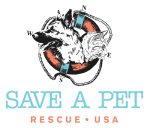[et_pb_section admin_label=”section”][et_pb_row admin_label=”row”][et_pb_column type=”4_4″][et_pb_text admin_label=”Text” background_layout=”light” text_orientation=”center” text_font=”Bree Serif||||” use_border_color=”off” border_color=”#ffffff” border_style=”solid”]
Animal Hoarding Is Animal Abuse
[/et_pb_text][/et_pb_column][/et_pb_row][/et_pb_section][et_pb_section fullwidth=”off” specialty=”off” admin_label=”Section”][et_pb_row admin_label=”Row”][/et_pb_row][/et_pb_section][et_pb_section fullwidth=”off” specialty=”off” admin_label=”Section”][et_pb_row admin_label=”Row”][et_pb_column type=”4_4″][et_pb_text admin_label=”Text” background_layout=”light” text_orientation=”left” use_border_color=”off” border_color=”#ffffff” border_style=”solid”]
When good intentions go bad, animals suffer.
One of the hardest situations is that of an animal hoarder. Save-A-Pet Animal Rescue is no stranger to this often silent epidemic. According to Animal Planet, there are approximately 250,000 reported animals that are victims of animal hoarding every year. However, there are many cases that go unreported. A small fraction get reported by fed-up neighbors.
Animal hoarding in adults is often triggered by an event or situation such as the loss of or stress in a relationship, economic hardship or a major health issue. Animal hoarders have also been known to hoard objects; approximately 40 percent of object hoarders also hoard animals. Technically, most are considered abusers by keeping an overpopulation of animals in filthy conditions where parasites are rampant, food is everywhere and the stench of urine and feces overpowers the most seasoned rescuer. Essentially, the entire house is a litter box. Walking down the hall is a chore because of the clutter from a lifetime of collectibles as well as excrement.
Such is this case: a caring, elderly woman, who wanted no animal to suffer, took in more cats than she could possibly care for. She can’t even physically take care of herself, yet she feels compelled to help the over 50 strays living in her neighborhood in New York.
“For over 10 years, neighbors called officials, including the Department of Health, Adult Protective Services, the Building Department, the Fire Marshal, the SPCA, and the Town Animal Control,” said Dori Scofield, president of Save-A-Pet. “The stench of cat urine permeated the street. The fact that this elderly woman was alive and breathing the air in this house is beyond comprehension.”
Throughout the week, over 40 cats were removed, vetted, spayed/neutered, vaccinated, microchipped and medicated as necessary. Several cats had to have their eyes removed due to untreated infections. Sadly, many of the cats lived an unsocial life inside the house and became “indoor ferals.”
“These types of hoarding situations can overwhelm rescues, and that is why we need to network to find homes and raise funds for their care,” Ms. Scofield said.
[/et_pb_text][/et_pb_column][/et_pb_row][/et_pb_section]





